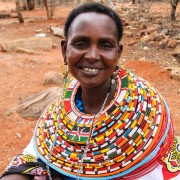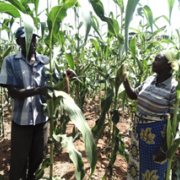Speeches Shim
In 1882, the Government of Absynnia (now Ethiopia) gifted one of its iconic zebras to President of France Jules Grevy. The exotic animal was then recognized as its own species of zebra and given the name Grevy’s zebra. This species of zebra is identified and differentiated from other zebra species by its fine close-set stripes, white belly, and large ears, among other traits.

As a member of the Samburu tribe, 30-year-old Nalan’gu Lokoloto is expected to remain at her home in Kalama Conservancy—for days and sometimes weeks—while her husband is out tending to the family’s livestock. She has never attended formal school.
September 2017—Stanley Kimeli has seen his harvest double since joining a local youth group in western Kenya called Kilima Tumaini, or Mount Hope. With only a primary school education, he did not know how to farm profitably before joining the group in 2007.
Although the region is known as the breadbasket of Kenya, local small-scale farmers like Kimeli have not always had the resources or opportunities to compete with larger growers in major commercial agricultural markets.
As the morning sun rays hit the Subukia village in Kenya’s Nakuru County, hundreds rise and leave their homes for daily labor. Living among them is Elizabeth Wangombe Wangui, a 47-year-old dairy farmer.

As Mutua Kaite walks along the terraces of his 4-acre farm in southeastern Kenya, he points to the bounty of growing crops. Five years ago, the land was dry and Kaite’s crops suffered.

Comment
Make a general inquiry or suggest an improvement.